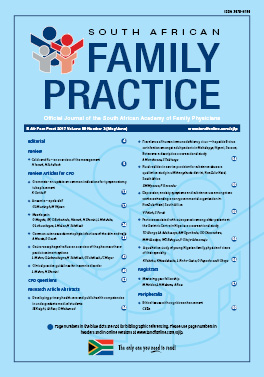Factors associated with osteoporosis among older patients at the Geriatric Centre in Nigeria: a cross-sectional study
Keywords:
Geriatric centre, Nigeria, older patients, osteoporosis
Abstract
Background: Osteoporosis is a silent disabling clinical condition often attributed to ageing. It is of public health importance because of its complications and attendant morbidity and mortality. Methods: A cross-sectional study was undertaken of 2401 older patients (60 years and above) at the Geriatric Centre, University College Hospital, Ibadan. Candidate variables such as socio-demographic characteristics, anthropometric indices, physical and lifestyle habits were assessed. Bivariate and multivariate analyses were carried out using SPSS 17®. Results: The point prevalence of osteoporosis was 56.9% (males = 43.7% and females = 65.8%). The most significant factors associated with osteoporosis on logistics regression analyses were increasing age, female sex, lack of formal education, lack of engagement in occupational activities and living with relatives/friends. Receiving social support from relatives/friends, nonparticipation in sporting activities at younger ages, prolonged use of medications for peptic ulcer disease, hospitalisation on or after the age of 60 years and asthenic build were also found to be significant. Yearly increase in age shows a 6.9% (95% CI 5.4–8.4%) increase in the odds of having osteoporosis. Conclusion: The high prevalence of osteoporosis among older persons in this study calls for concerted efforts by the healthcare workers to prevent osteoporosis among older patients. (Full text of the research articles are available online at www.medpharm.tandfonline.com/ojfp) S Afr Fam Pract 2017; DOI: 10.1080/20786190.2016.1272248
Published
2017-07-10
Section
Research Articles
By submitting manuscripts to SAFP, authors of original articles are assigning copyright to the South African Academy of Family Physicians. Copyright of review articles are assigned to the Publisher, Medpharm Publications (Pty) Ltd, unless otherwise specified. Authors may use their own work after publication without written permission, provided they acknowledge the original source. Individuals and academic institutions may freely copy and distribute articles published in SAFP for educational and research purposes without obtaining permission.

